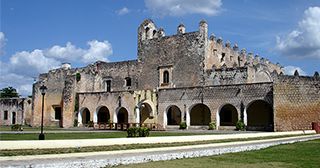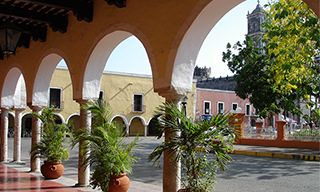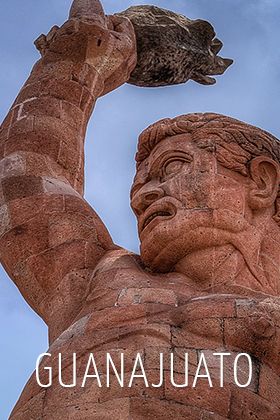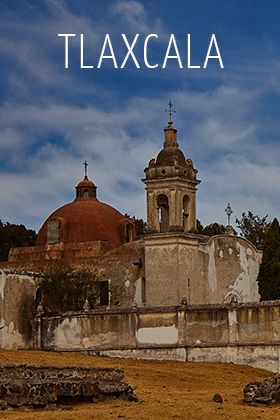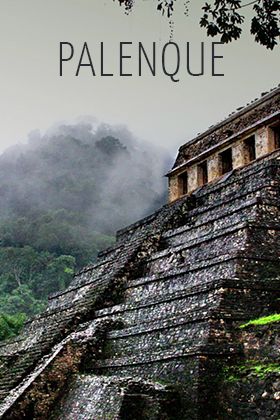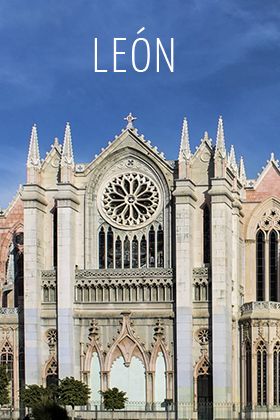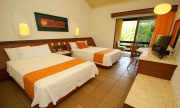Description
Called the Capital of East Maya, the city is a fantastic world of underground caves full of color, delicious gourmet dishes, vibrant streets, and historical passageways. The city was founded in 1543 by a group of Spaniards who wanted to dominate the region and settle there.

State: Yucatán
Coordinates:
20°41'22"N 88°12'06"W
Altitude: 30 meters above sea level
Area:
km²
Time Zone: Central Standard Time UTC-6
Population: 48,973 inhabitants (INEGI, 2010)
Area Code: 985
It is one of the newest members on the Pueblos Mágicos (Magical Villages) list and rightly so. Its colorful colonial houses with large courtyards, its proximity to archaeological treasures such as Chichen Itza, Coba and Ek Balam, plus the beautiful cenotes (sinkholes) make it a must see destination in Mexico.
Getting There
The city of Valladolid is located in the southeastern state of Yucatan, in the eastern part. It is halfway between Merida and Cancun, surrounded by Mayan archeological ruins, right in the heart of that culture.
You can fly to Manuel Crescendo Rejon International Airport, in Merida the capital of Yucatan, or the International Airport of Cancun in Quintana Roo. The city of Valladolid is 169 km from the first airport and 158 from the second.
From Merida you can take the highway Merida-Cancun or the Carretera Federal 180. And from Cancun to Merida, you can use the same route.
Distances from Valladolid to other destinations in Mexico
- Mexico City, Federal District: 1,466 km.
- Guadalajara, Jalisco: 1,996 km.
- Merida, Yucatan: 169 km.
- Monterrey, Nuevo Leon: 2,346 km.
- Cancun, Quintana Roo: 158 km.
- Oaxaca, Oaxaca: 1,527 km.
- Morelia, Michoacán: 1,758 Km.
- Veracruz, Veracruz: 1,182 km.
Climate
The climate is humid and hot. The average annual temperature is 25.8 ° C, but it can exceed 40°C.
The rainy season is usually long and is during the summer.
What to Pack
It's a hot and humid place, so you have to wear light clothing, comfortable shoes, hats, and sunscreen along with mosquito repellent.
If you are interested in snorkeling, it is good idea to have your own equipment, although you can rent it.
Do not forget the flip flops and a couple of towels for the cenotes.
The state of Yucatan is hot, even in the winter you won’t need more than a light sweater.
Attractions in the city of Valladolid
The Convent of San Bernardino de Siena is, without doubt, the main tourist attraction of the city. It was built by the Franciscans between 1550 and 1560 and became the center of a village called Sisal. Its façade includes medieval type arches, in addition to the battlements on the walls. Inside, there is a typical Baroque wooden altar in gold. In the garden there is a cenote where pre-Columbian pieces have been found.
The Plaza Principal has a traditional country–tropical flavor.
City Hall.
Santa Lucía Church has a vaulted ceiling and lime plaster floor.
The Saint Servatius Parish was built in the 18th century on a 16th century church with two bell towers and stone reliefs.
Church of la Candelaria is adorned with a portico of arches and has a Churrigueresque altarpiece inside. Of course the colored brick façade attracts attention.
The Museum of San Roque was a church that now houses an important collection of archaeological pieces.
The zoo outside the Zaci Cenote in the heart of the city. The Zaci Cenotes, which houses the famous Blue Cave, is a magical place where you can swim in the crystal clear turquoise waters below impressive stalactites. Open from 7:00a.m. to 5:00p.m.
Suytun Cenote is a cave full of stalagmites and shallow waters, ideal for the whole family and is 8 kilometers from the city.
Not to be Missed
The X'keken Cenote and Samula Cenote are only 5 kilometers from Valladolid in the town of Dzitnup.
Ek Balam Archaeological ruins are only 27 kilometers away and are the youngest and important Mayan site. The highlight of the site is its Acropolis and was the grave of Governor Ukil-Kan-Lek-Tok. The parts of the walls are spectacular with defined and very well preserved shapes.
Dinner is served!
The Yucatan cuisine is known for its richness and variety. Despite the heat of the climate, the food is spicy, hot, and exquisite. Typical dishes of the area include lime soup, roasted pig, chaya with egg, chicken stew, and cheese fillings. Pork is a common ingredient in many dishes. As for the desserts there are cassava with honey, sweet potato with coconut, cocoyol in syrup, and marzipan pumpkin seed to name a few.
Feasts and festivities in Valladolid
Late January and early February: Feast of the Candelaria. Cultural, gastronomic, livestock, and craft, demonstrations fill the city.
Last week of April until May 3: Feast of la Santa Cruz in the neighborhood of the Cruz.
June 3 and 4: First spark of revolution. The center of the city becomes a battleground. A reenactment takes place in the plaza.
September 15-16: Celebration of Mexico's Independence Day.
October: Guild of the Patrons of Churches and Crafts. In the San Servacio Church there are religious processions and masses in honor of the patron saint.
October and November: Fall Culture. Cultural, social, and artistic events at the House of Culture, the city parks, and some schools.
November: Phixan Hanal festival commemorates the faithfully departed. Between altars for the dead and offerings, the locals remember their loved ones who are no longer with them.
December 12: Feast of Our Lady of Guadalupe.

